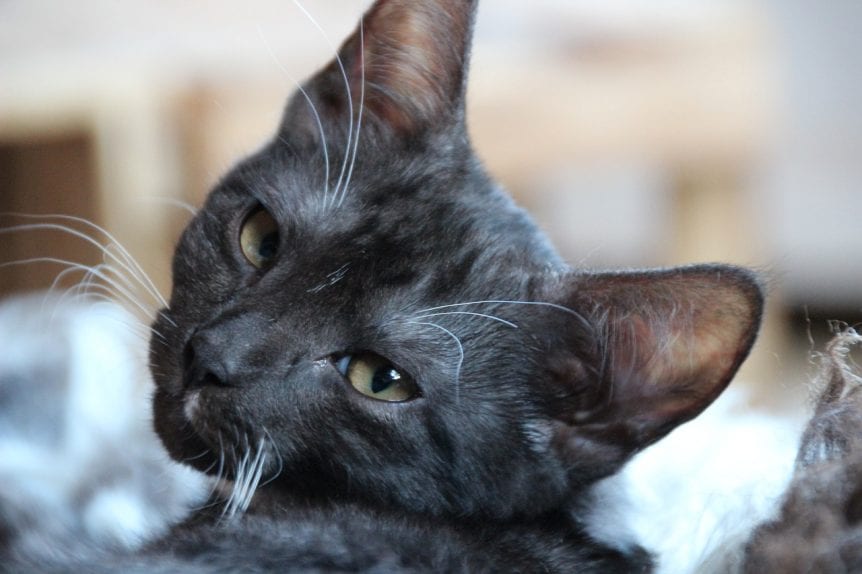Your cat doesn’t just use purrs and meows to communicate – they use their whole body. Read this quick guide to understand how your cat is feeling or what they’re trying to tell you.
Pay attention to your cat’s eyes, ears, body and tail—they’re all telling the story. Here are some basic clues:
Ears
- Forward: alert, interested or happy
- Backward, sideways, flat (“airplane ears”): irritable, angry or frightened
- Swiveling: attentive and listening to every little sound
Eyes
- Pupils constricted: offensively aggressive, but possibly content
- Pupils dilated (large): nervous or submissive (if somewhat dilated), defensively aggressive (if fully dilated), but possibly playful
Tail
- Erect, fur flat: alert, inquisitive or happy
- Fur standing on end: angry or frightened
- Held very low or tucked between legs: insecure or anxious
- Thrashing back and forth: agitated. The faster the tail, the angrier the cat
- Straight up, quivering: excited, really happy. If your cat hasn’t been neutered or spayed, they could be getting ready to spray something.
Body
- Back arched, fur standing on end: frightened or angry
- Back arched, fur flat: welcoming your touch
- Lying on back, purring: very relaxed
- Lying on back, growling: upset and ready to strike
Rubbing
When your cat rubs their chin and body against you, they’re telling you they love you, right? Well, sort of. What they’re really doing is marking their territory. You’ll notice that they also rub the chair, the door, their toys, everything in sight. They’re telling everyone that this is their stuff, including you.
Kneading
This is when the cat works their paws on a soft surface as if it they’re kneading bread dough. It’s a holdover from kittenhood, when a nursing kitten massaged their mother’s teats to make milk flow. Your cat does this when they are really happy.

